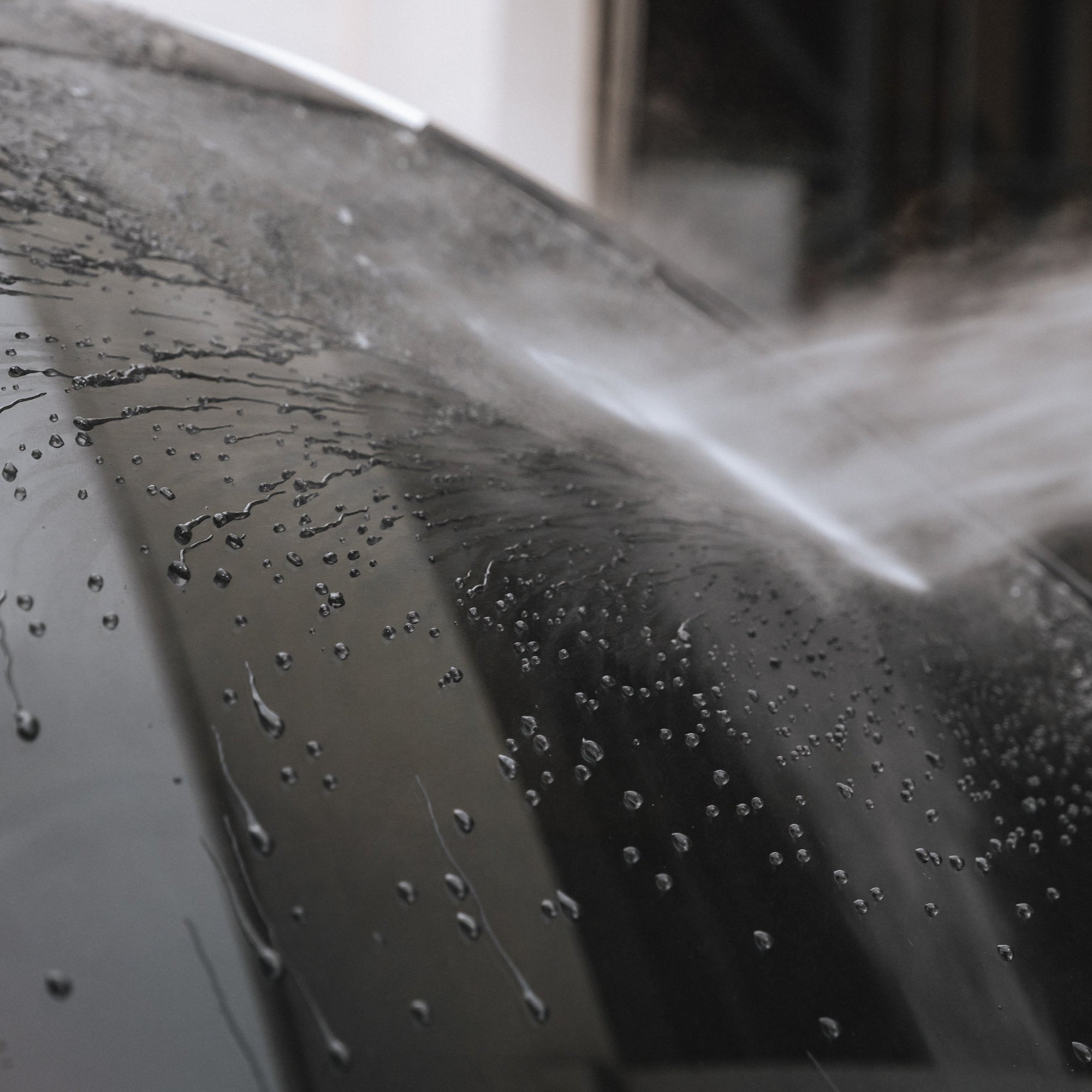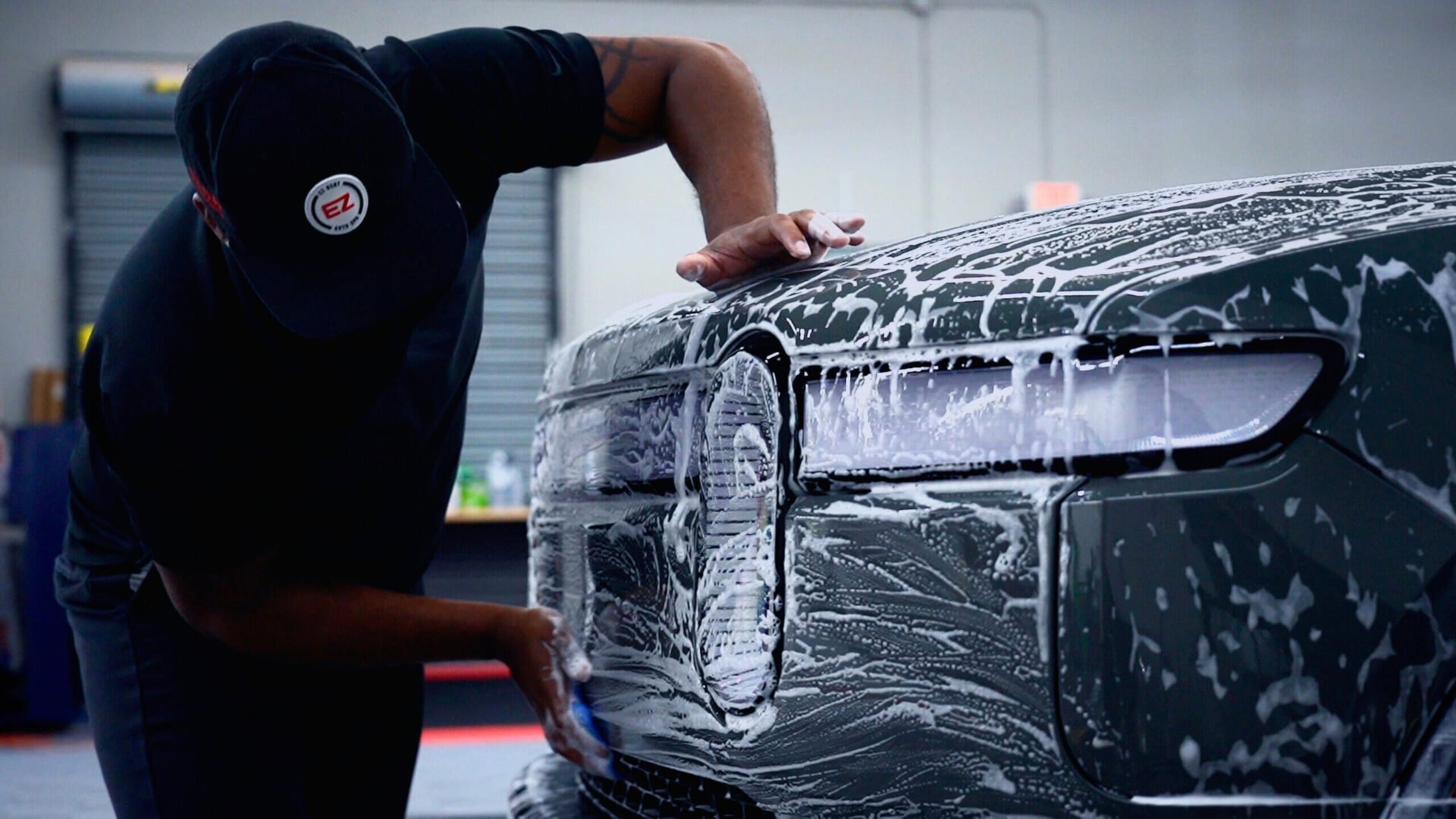Exploring the Durable Security of Ceramic Coating for Your Cars and truck
Exploring the Durable Security of Ceramic Coating for Your Cars and truck
Blog Article
Discovering the Various Sorts Of Coating for Autos: A Guide to Ceramic Options
In the realm of vehicle treatment, ceramic layers have arised as a substantial advancement, offering unmatched defense and aesthetic improvement. What sets apart one ceramic layer from another, and exactly how do these differences impact lasting car treatment?
Recognizing Ceramic Coatings
Ceramic layers have become a prominent option for automobile fanatics looking for to improve the look and protect of their cars. These advanced coverings are included silica or silicon dioxide, which, when put on a car's outside, create a chemical bond with the manufacturing facility paint. This bond produces a protective layer that not just amplifies the gloss and deepness of the paint but also provides an awesome guard against environmental pollutants such as UV rays, bird droppings, and road crud.
A crucial advantage of ceramic layers is their hydrophobic properties. This implies that water and other fluids grain up and roll off the surface area, substantially reducing the probability of water areas and making the vehicle much easier to clean up. In addition, the coatings supply enhanced resistance to small scratches and swirl marks, thus preserving the vehicle's excellent look over time.
Furthermore, ceramic coatings are known for their sturdiness, typically long lasting a number of years with correct maintenance (ceramic coating). Unlike typical waxes or sealers that call for constant reapplication, ceramic coatings provide long-lasting security, making them an economical remedy for auto proprietors devoted to keeping their vehicle's aesthetic appeal and resale value

Sorts Of Ceramic Coatings
Amongst the myriad of safety solutions available, ceramic coatings use an array of types customized to fulfill varied vehicle requirements. These sophisticated formulations primarily include polymer-based ceramic finishings, quartz-based finishes, and hybrid variations. Each kind is crafted to offer varying levels of security and toughness, dealing with particular user preferences and lorry needs.
Polymer-based ceramic layers are renowned for their simplicity of application and solid protective properties. They form a versatile, yet resistant layer on the automobile's surface, effectively defending against environmental impurities and minor abrasions. These coatings are suitable for those seeking an equilibrium between performance and cost-effectiveness.
Quartz-based ceramic layers, on the various other hand, are developed with silica dioxide (SiO2), offering remarkable hardness and longevity. ceramic coating. Commonly taken into consideration the premium choice, they give an exceptionally high-gloss surface and durable protection against severe ecological elements and UV damage
Hybrid ceramic coverings incorporate elements from both polymer and quartz-based solutions, delivering improved convenience. They use remarkable hydrophobic residential or commercial properties, making upkeep easier by making sure water and dust slide off effortlessly.
Advantages of Ceramic Coatings
Among the key advantages of ceramic finishings hinges on their ability to substantially improve a car's look while providing long-lasting security. Ceramic finishes develop a high-gloss coating that highlights the vehicle's paint, giving it a streamlined, polished look that is both striking and sophisticated. This visual upgrade is not simply shallow; the layer creates a sturdy, transparent layer that shields the paint from environmental contaminants such as UV rays, bird droppings, and acid rainfall, eventually extending the lorry's beautiful problem.
Furthermore, ceramic coatings supply exceptional hydrophobic homes, making the auto's surface area resistant to water and dirt. This hydrophobic effect makes sure that water grains and rolls off the surface area easily, decreasing the buildup of grime and making the cleaning procedure significantly simpler. This feature not just saves time however also adds to keeping the vehicle's look between washes.
Additionally, the long life of ceramic coverings is noteworthy. Unlike traditional waxes or sealers, which may call for reapplication every couple of months, a high-quality ceramic layer can last several years with correct treatment. This toughness converts right into cost-effectiveness, as it reduces the frequency of maintenance needed to keep the automobile looking brand-new.

Application Refine
To achieve the complete benefits of ceramic finishings, the application procedure should be implemented with careful interest to detail. This procedure involves numerous vital steps, beginning with comprehensive surface prep work. The car's surface should be carefully cleaned up, sanitized, and polished to guarantee that the layer can adhere correctly. Any type of existing wax, sealers, or contaminants should be removed to avoid imperfections in the finish.
Once the surface is prepared, the ceramic finish is applied Visit This Link in a regulated setting, ideally indoors, to avoid contamination from dirt or debris. The finishing is usually used in small areas using a specialized applicator, guaranteeing an also and thin layer. It's necessary to stick to the product's particular guidelines regarding temperature level and humidity, as these factors can significantly affect the application and curing process.
After application, the layer needs sufficient curing time. Appropriate application not just enhances the coating's long life but also optimizes its safety qualities.
Maintenance and Care
After the careful application of ceramic finishings, keeping see this website the stability and efficiency of the covering becomes the following priority. Appropriate treatment extends the life-span of the finishing, ensuring it continues to improve the lorry and secure's appearance.
Along with regular washing, regular examinations are necessary. Analyze the layered surface for any kind of signs of wear or contamination. If pollutants like tree sap or bird droppings exist, they ought to be without delay gotten rid of using a mild cleansing remedy to avoid etching.
It's likewise suggested to use a ceramic booster every few months. These items help renew the covering, renewing its water-repellent attributes and UV protection. Car parking in shaded areas whenever possible will better secure the covering from too much UV direct exposure.
Conclusion
The exploration of ceramic layers for lorries highlights the distinct advantages of polymer-based, quartz-based, and crossbreed options, each offering special advantages in terms of application, security, and sturdiness. By picking the ideal type of ceramic covering, lorry proprietors can improve protection against ecological damages and boost the visual appeal of their cars. Recognizing the application procedure and maintenance needs additionally guarantees the long life and effectiveness of the picked finishing, making it a useful investment in lorry care and conservation.
Ceramic finishings have actually emerged as a prominent selection for automobile lovers looking for to safeguard and boost the look of their automobiles. These innovative formulas largely consist of polymer-based ceramic coatings, quartz-based layers, and hybrid versions.After the thorough application of ceramic coatings, more helpful hints preserving the honesty and efficiency of the coating becomes the following concern.The expedition of ceramic finishes for vehicles highlights the unique advantages of polymer-based, quartz-based, and crossbreed alternatives, each offering special advantages in terms of protection, application, and toughness. By picking the appropriate kind of ceramic layer, lorry proprietors can improve protection versus ecological damages and improve the aesthetic allure of their cars and trucks.
Report this page